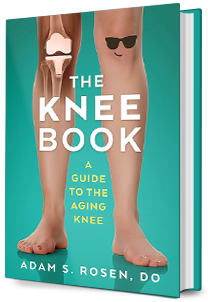Hip
Hip Fracture
-
Hip fractures are a serious injury. They can occur in younger individuals from high energy accidents or in older individuals from low energy falls. The low energy fractures are usually due to weak or osteoporotic bone.
There are many different types of hip fractures that can occur. Fractures may involve the neck, the trochanteric area, the subtrochanteric area or the shaft of the femur. Depending on what type of fracture you have dictates how it is treated. Fractures may be fixed with screws, plates and screws, rods, partial hip replacements or total hip replacements.
Some people may fracture the hip around a previously placed hip replacement. These are more complex injuries but can be fixed. The bone may be fixed with plates, screws and/or cables and if the hip replacement parts are loose they will need to be replaced or revised.
Hip fractures are a serious conditions and it is possible to have major complications due to these injuries. Other organ systems can be affected by the trauma to the body and patients could develop blood clots, need transfusions of blood, have kidney or lung problems, have heart problems or even death.The goal is to get patients fixed as quickly and safely as possible to get them out of bed and on their feet. This is done in conjunction with the medical staff at the hospital to optimize patients for the operation.
In addition to healing from the surgery the goal will be to maximize your nutrition and bone health to attempt to prevent other fractures in the future. This may be done in conjunction with your primary care doctor as an outpatient after your discharge from the hospital.
Total Hip Replacement
-
Hip arthritis is an inflammation of the joint due to loss of cartilage. Arthritis may be due to simple wear and tear and age (osteoarthritis), injury and fractures (post-traumatic arthritis), or systemic diseases (rheumatoid arthritis or psoriatic arthritis).
Hip arthritis may cause pain, stiffness, ache, instability, catching, limping or difficulty in being an active individual. The diagnosis is made by taking a careful history, a physical examination and x-rays. When conservative care has failed to relieve pain and symptoms a person may be a candidate for total hip replacement.
A hip replacement replaces the arthritic hip socket with a new ball and socket. A stem is placed into the femur (thigh bone) with a ball attached to the top of the stem. Most stems are press fit or wedged into the bone. If the bone quality is poor the stem may be cemented or glued into place. On the cup side (acetabulum) a new metal cup is placed into the bone and a plastic liner is then placed into the metal cup.
As with any surgical procedure there are risks which may include infection, blood clots, dislocation, leg length discrepancy, pain, limp, fractures, injury to nerves or vessels, the need for a transfusion or the need for further surgery.
Hips can wear out over time or with excessive activity. If your hip replacement wears out you may need a revision.
Revision Hip Replacement
-
Hip Replacements occasionally need to be revised or redone. This may be due to fractures, infections, instability or wear.
When fractures occur around a hip replacement the implant may or not be stable. The fracture may require fixing the bone with plates, screws and/or cables. If the hip implant is loose or unstable it may need to be revised to a new stem.
If an infection occurs this may require one or more surgeries and a course of intravenous antibiotics.
Occasionally hips can dislocate. This can occur early or late after placement of the implant. Surgery may be required to address problems which could lead to repeat dislocations.
All hips wear out over time. If the bearing wears out it may cause pain or instability. Routine x-ray follow-up is necessary to track the wear of your hip. If it wears out it may need to be revised.
All hip revisions are big surgeries and in some ways are a way to salvage you hip. The surgery is usually longer than a routine hip replacement and the recovery may be longer. The risks of a hip revision are greater than a routine hip replacement and may include infection, blood clots, stiffness, bleeding and the need for transfusion, dislocation, leg length inequality, limp, injury to vessels or nerves, pain and the need for additional surgery.






